Architectural Lighting and LED Solutions for YOU
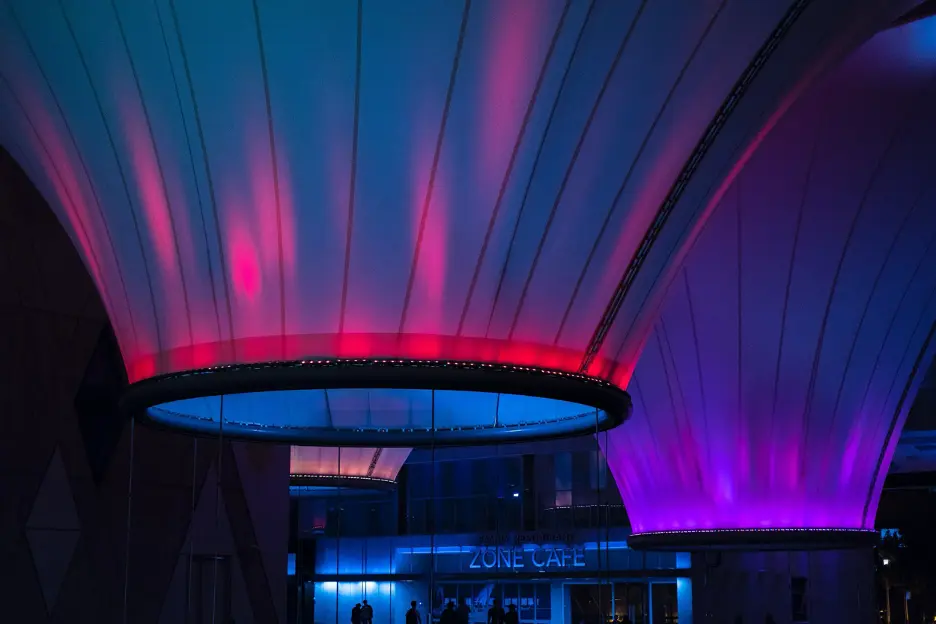

Image Source: Unsplash
Architectural lighting is more than light in a space. At the intersection of engineering, tech, art and design, architectural lighting upgrades spaces for breathtaking illumination, evoking a desired feeling and functionality!
The architectural lighting market is increasing rapidly. Just nearby our Newbury Park office are the recently built West Hollywood hotels utilizing architectural lighting design throughout (with linear strips, downlights, decorative wall sconces, and illuminated bar and dining area spaces. Apart from high-end hotels, many new commercial and residential developments are incorporating complex lightning design in their architectural and interior design plans, in order to attract customers or residents to newly renovated and developed spaces. Check out the lighting design of the West Hollywood Edition hotel below:
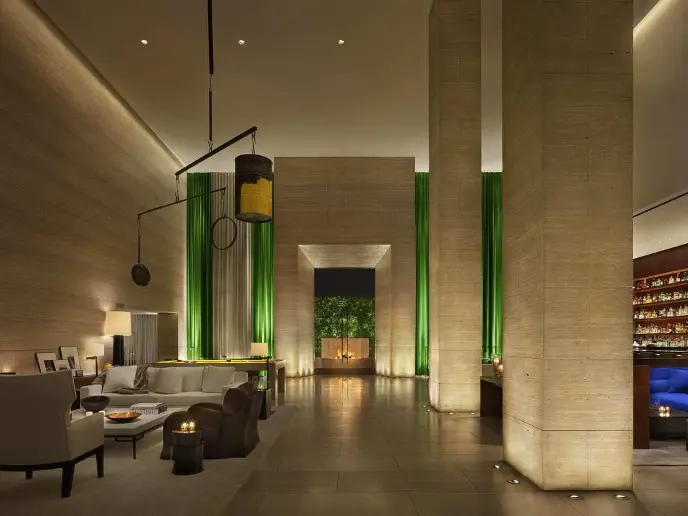
The West Hollywood EDITION Hotel 2020, Source: Edition Hotels
Lighting design seems like a hot, trending topic, however, it has always been vital to the ecosystem of architectural construction, a building’s aesthetics, and spatial design.
Richard Kelly, a pioneer of lighting design and architecture, notes that “[lighting] [is] an integral part of architecture”. Richard Kelly was one of the lighting pioneers who used lighting as an architectural design element instead of traditional models of using light for the functionality. With a 40-year career as a lighting designer and overseeing over 300 projects, Kelly heavily influenced the field and the techniques used today. His works include, The Glass House, Seagram Building, Yale University Art Gallery, Dulles International Airport, Kimbell Art Museum, and the Yale Center for British Art (Schielke, Thomas. “Light Matters”).
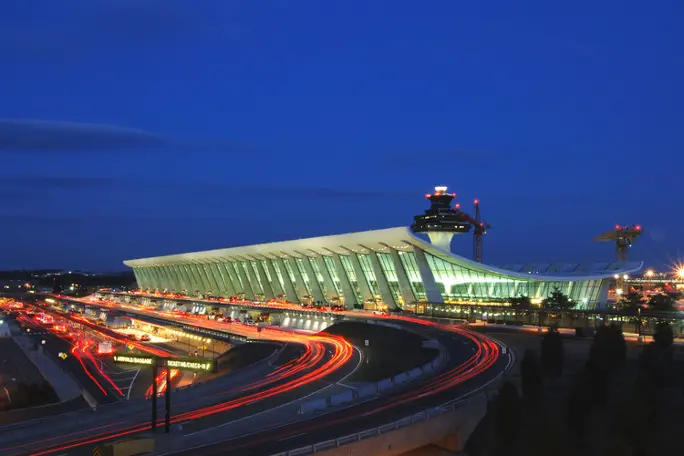
Dulles International Airport (1963), Source: ArchDaily
The term “architectural lighting” is used quite frequently in the industries of architecture, real estate design, and LED lighting as a general term for light fixtures made for the specification of buildings, inside and out. The definitive language of architectural lighting is the intersection of art [architecture] and technology [lighting] for the illumination of buildings with consideration to the design and function (“What is Architectural Lighting”).
Commercial and residential buildings use lighting design in different ways for each project’s individual needs and objectives. Physics, engineering, and the psychological and physiological effects of light come into play when crafting these architectural ventures.
The important thing to know, is that architectural lighting encompasses three main factors:
1) The building’s aesthetic, which is important for residential and commercial applications. For instance, an industrial looking building will require different lighting to that of a modern or classically developed structured building.
2) The ergonomics or function of the building, meaning any aspect improving one’s ability to live, work, relax, or play, to make the space easier to use.
3) The efficiency of energy, ensuring that light is economically or optimally used and distributed. This is where architectural lighting design is especially relevant (“What is Architectural Lighting”). In terms of environmental conservation, using strategic LED lighting solutions, such as dimmers, timers, and motion detection systems, can positively impact the world and lighting industry on a large scale. As buildings and city regulators prioritize this factor, in the consideration of constructing large-scale public buildings or city projects, more economic innovations have been made.
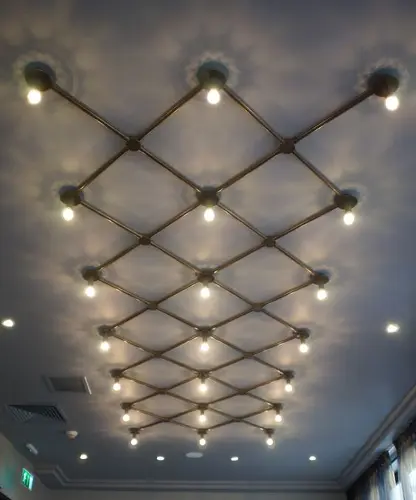
Ceiling Pipe Industrial Lighting, Source: Period Property Store
Now that the terms architectural lighting and lighting design have been explained, we can explore briefly how architectural lighting differs from traditional lighting; how to take advantage of this technology for more optimized spaces; and, ultimately, how to achieve your own LED lighting goals and lighting project objectives.
Architectural lighting factors in natural light, electrical light, or both, to serve and advance human action/mobility. Molly Munson of Adam Wheeler Design explained, “Good architecture [tries] to create a spatial experience.” Whereas, architectural lighting differs from traditional lighting because, “it has to perform in collaboration with the architecture. They can never be at odds aesthetically — they have to complement each other” (“What is Architectural Lighting”).
“Lighting design relates to the specific purpose, or multiple purposes, of a given particular space”. – Language of Light
The following are a few examples for different household rooms and purposes. For the kitchen, focusing on lighting for food preparation and the stove for cooking the food, ensures that no fingers get chopped off in the process, the right ingredients are used, and the food is taken off at the right time, temperature, and coloring.
In a home theater or media room, the best design lighting would be highlighting the seating and viewing, ensuring good, easy viewing to the screen, and finding your way in the dark back to your seat (“What is Architectural Lighting”).
Another important distinction is the difference between residential lighting and commercial, concept store lighting. The brightness is usually increased for productivity, efficiency, and photo-taking. Especially in retail or commercial spaces, the light reflects the ambiance, mood, and branding of the store to reach the target customer and make the shopping experience comfortable, yet easy to see and purchase items effectively for the goal of repeat business and salesmanship.
The utilization of LED design lighting in a commercial space has multiple advantages.
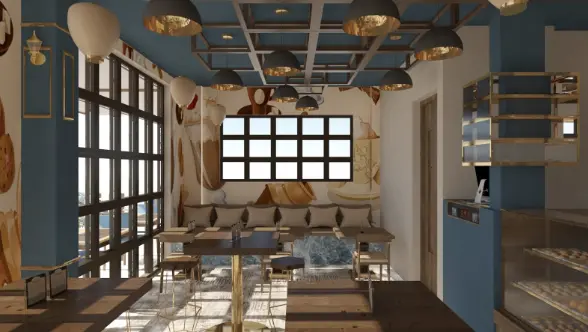
Cafe Interior Design Concept by Sara Mostafa, Source: Behance
Here are 7 reasons to switch to LED solutions to benefit you or your architectural lighting project:
1) Design Spaces with Fewer Limitations
LED lights allow more room to design than that of traditional lights and luminaries. Because of the way LEDs are made, with thin PCB Boards or LED tape, any design and space can be accommodated and ANY light fixture imaginable can be made.
Here is a list of PCB boards for LEDs we use to make and complete any new or retrofitted LED light fixture: Linear LED PCB, round LED PCB, Star LED PCB, Curve LED PCB, Square LED PCB, Ring LED PCB, rectangular LED PCB, Custom LED PCB.
All shapes and sizes are possible while also minimizing expensive pricing by using the
This removes architectural design restrictions when planning placements for lighting, “like plenum space, conduit locations, ceiling height, or insulation contact concerns” (“LED Architectural Lighting: A Practical Guide”). These can be restrictions with traditional lights having wires loose and hanging, bulky fixtures, and non-function technology behind the lights, when LEDs can use smart technology for the most up-to-date buildings, codes, and energy regulations.
Costs have fallen and more business owners are taking the steps to UPGRADE their facilities with LED light fixtures. Businesses in search of the benefits that LEDs provide which include cost effectiveness, energy efficiency, and versatile lighting design solutions. Commercial and architectural lighting is experiencing an incredible transformation, pushed forward through highly efficient and reliable LED technology (“Benefits of LED Lighting”). In LED lighting there is a new innovation everyday propelling the way we use and see light in its full spectrum of colors, uses, and capabilities.
2) Simple to Retrofit Your Existing Lighting System
A common question when switching from traditional lighting to LEDs is, “do LEDs have the same lumens and warmth as my traditional lights?” The answer: Yes! And so much more.
In the past, LED lighting lacked the projection power of traditional lights. Not anymore. Today, LED lighting matches traditional lighting in color AND tone, while providing superior clarity, and various modes of turning on: from motion, to remote control to timer, and dimmer – the range of options are endless and infinite, only to advance with smartphone technology (“Benefits of LED Lighting”).
What’s more is there is no complicated procedure for switching out your lighting. If you can install a traditional light fixture or bulb, you can install LED bulb equivalents without changing your existing fixtures.
3) Provide Aesthetic Appeal with Greater Versatility
The light cast by LEDs is unadulterated and brilliant and is nearer to copying genuine daylight than some other accessible lighting. LED lighting has superior CRI, which means the colors in your space render more true to their actual color. Additionally, while many fixtures are built around the bulbs ability to light a space, fixtures built around LED’s can take on smaller, more dynamic sizes, including everything from tape to sharp, ultra-thin geometric designs.
LED bulbs are available in a variety of colors and temperatures to suit any interior design element or architectural demand. Whichever type of light you need, they are available in cost-efficient LEDs such as, sconce lights, pendants, chandeliers, lampshades, table lamps, floor lights, floor lamps, accent lights, floodlights, recessed or mounted lights, specialty industrial fixtures, and more. There are LED lights accessible to fit your fixture and type of project (“Benefits of LED Lighting”).
4) Directional Lighting is possible with LEDs operating with Full Brightness
By design, LEDs emit their light in one direction rather than all around. This helps reduce energy consumption because no light is wasted or trapped within reflectors and diffusers, which can keep over half the generated light from exiting the bulb. The directional nature of their output makes LEDs ideal for applications such as task lighting and recessed downlights. With ever-improving technology, “LEDs render color better than their predecessors, helping you distinguish the color of objects while conserving energy” (Levison, Sarah, “Advantages of LED Lights“).
5) LEDs as a Smart Choice
LEDs offer a wide range of applications, great customization, and energy conservation to solve problems that traditional systems unfortunately cannot. With an LED bulb, you can consume up to 90% less energy than with old luminaires (NY Engineers, “Top 7 Benefits of Using LED Lights”).
With a smartphone or tablet, you can brighten up spaces, or even with your voice and a wireless connection. This way you can manage your home lighting anywhere and at any time. Also, systems with smart sensors, both in the building and in the lighting units themselves, can perform real-time diagnostics to maintain efficiency (NY Engineers, “Top 7 Benefits of Using LED Lights”).
6) LED Bulbs stand for Longevity
LED sources are prominent because they are long-lasting. High-end LED bulbs are solid-state devices lasting for 10 years plus. The longer lifespan also has a positive impact on the environment, since less lamps and fixtures end up as waste in landfills.
Unlike traditional lighting sources that fail under extreme conditions, LED fixtures can be built to resist vibration, wind, rain, drops, shocks, and even sub-zero temperatures. You can add special coating, which we provide for added resistance in high-abuse scenarios. LEDs also have heat diffusers and accurate electronic power supplies (drivers), which prevent overheating issues that tend to be a cause of lighting malfunction in poorly made lighting fixtures (Engineers, N. (n.d.). “Top 7 Benefits of Using LED Lights”).
7) Creating Mood and Cutting Costs with LEDs
Before the lighting revolution brought on by LED’s, creating specific moods in multi-use spaces was incredibly costly. Now creating mood lighting is a necessity to any space. From restaurants, to pop-up store shops, to star-studded entertainment award nights, to home cabinet and furniture lighting, any mood can be modified with the use of LED lighting through the CRI and color temperature. To learn more about LED module components, read World Class Illuminations last blog post, “7 Things You Should Know About LED”.
The downside of creating mood lighting is that it can carry a real cost. Factor in the multiple fixtures across the space of the building (inside and out) and it might not be feasible to renovate an entire space or work on that specific design project. HOWEVER, switching out the most used lighting systems in favor of newer models of LED lighting systems not only creates instant energy savings (recurring monthly), it also cuts down on the resources needed to maintain them (“LED Architectural Lighting: A Practical Guide”).
In short, the utilization of LED design lighting in any commercial space does have multiple advantages. The versatility of LED technology allows them to be incorporated into sleek fixtures and INNOVATIVE designs. Powerful lighting solutions paired with an elegant design make LED technology the perfect option for architectural lighting solutions. These advantages that have been listed above are only a few of the very many when it comes to LEDs in the architectural lighting industry. Architects and business owners have a lot to keep in mind when illuminating their buildings, manufacturing spaces, warehouses, office spaces, and more.
Advancements in LED industrial lighting offer decision-makers more cost-effective options allowing architect’s limitless creative freedom and business owners’ uncompromising results.
To see how we are able to connect you with the right LED lighting solution with our custom LED module boards and LED light solutions, follow us at https://www.wcico.com.
Contact our sales team directly at:
sales@wcico.com
(805) 499 – 9513
Sources:
“Benefits of LED Lighting for Commercial and Architectural Applications”. REL Industries. 15 Oct 2018. http://rleindustries.com/benefits-of-led-lighting-for-commercial-and-architectural-applications. Accessed 27 August 2020.
“LED Architectural Lighting: A Practical Guide”. TCP: Let’s Talk Lighting. 18 Dec 2018. https://www.tcpi.com/led-architectural-lighting-a-practical-guide/. Accessed 27 August 2020.
Levison, Sarah, “Advantages of LED Lights”. The Light Bulb Company: Bright Ideas. https://www.thelightbulb.co.uk/resources/ultimate-guide-led-lights-advantages-leds/. Accessed 28 August 2020.
New York Engineers. “The Top 7 Benefits of Using LED Lights Compared with Traditional Lighting”. NY-Engineers. 24 Oct 2019. https://www.ny-engineers.com/blog/top-7-benefits-of-using-led-lights. Accessed 29 August 2020.
Schielke, Thomas. “Light Matters: Richard Kelly, The Unsung Master Behind Modern Architecture’s Greatest Buildings”. Arch Daily. 29 April 2014. https://www.archdaily.com/501008/light-matters-richard-kelly-the-unsung-master-behind-modern-architecture-s-greatest-buildings. Accessed 9 September 2020.
“What is Architectural Lighting”. Alcon Lighting: Language of Light. 27 June 2020. https://www.alconlighting.com/blog/lighting-design/what-are-architectural-lighting-fixtures/. Accessed 28 August 2020.